By William McPeak
While the sword usually comes to mind first when one thinks of edged weapons, it was not actually the first such weapon—the knife was. The earliest form of knife may be more than two million years old, and it consisted of single- or double-edged sharpened mineral and stone pieces used by primitive people to cut up fresh kill and skin its precious hide. As such, the knife was a handheld tool before it became a weapon. The best materials to sharpen (by edge chipping) a knife blade included yellow amber, flint, and quartzite. But these and other materials had the same problem—they tended to break. Other materials, including bone, horn, and wood were also used with varying success. Early on, the knife in whatever form was modified with a sharp point to become a thrusting and stabbing weapon—the dagger—for use in fighting, self-defense, and just plain murder.

Stone remained a popular blade material even after metals (copper foremost) came on the scene. Bronze (3000 bc) was the only early metal practical for making a long dagger blade, which by then had developed its basic tapered look. In fact, it was bronze that made possible daggers sufficiently long bladed to become, in time, true swords. By 1400 bc, bronze daggers were being cast as a single piece with an integrated metal hilt, although a riveted handle or grip was far more functional. By 1500 bc, plentiful and much harder iron, which had been known for 1,500 years but was difficult to edge-sharpen, began figuring in weapons. It was a great advance for the sword, and the dagger flourished as well, with many special forms and ornate versions developed for ceremony and courtly show. In the Middle and Far East, daggers evolved with various interesting designs—straight, curved, re-curved, and double curved.
About 500 bc, the fighting dagger in Europe began to fade away. The practical knife remained in use, its utility reflected in a blade usually sharpened on one side for cutting. Roman commanders considered the dagger beneath them; the short gladius, or sword, ruled. But in the late eighth century, Charlemagne’s need for a well-organized feudal army helped revitalize the dagger as part of standard-issue military equipment. The dagger was to remain for centuries to come the common soldier’s secondary weapon.
While peasants were allowed to use the common knife only for eating and self-defense, the dagger as an ornament was found at the side of their social betters, from tradesmen to the rich merchant class and magistrates. By the later 13th century, the noble class rediscovered the dagger as a worthy accoutrement of war, useful as a secondary backup weapon on the battlefield. The reason for a second look at the dagger was the transition to mesh mail and plate armor from primitive loose forms of link and scale mail. It was more difficult to puncture vital spots with a broadsword at a safe distance. If locked in close hand-to-hand, a well-placed dagger could reach those spots much more easily or surprise an opponent and force him to yield for ransom instead of gambling on the chance of combat. The dagger became a legitimate—if not particularly honorable—means of dispatching a mortally wounded opponent.

Meanwhile, early medieval iron daggers continued to evolve with more advanced forging into various grades of steel weapons. The hilt was made up of a cross guard and the handle or grip—the latter of wood, horn, or ivory. The hilt might be cylindrical shaped or as two fitted sides or plates and was built around the narrowed, unworked part, the tang, of the blade for holding (as with the sword). The basic military dagger from ad 1300 into the 17th century was the quillon dagger. It had a sharply tapered, flat diamond cross-section blade (six to eight inches) brought to a point and sporting a short, straight cross guard, or quillon. Other styles included the gruesomely named kidney dagger and the baselard, named for the Swiss town of Basel. Although of usual dagger length, later examples were short swords with a limit of 20 inches, which were used in the 15th and early 16th centuries by Swiss mercenaries. The baselard dagger had a distinctive concave, I-shaped hilt of two riveted sections. The blade was more evenly tapered and was used in both military and civilian life. These were popular throughout the 16th century, with ornate and stylish hilts for fancy dress and parade use.
Also dating from ad 1300 was the rondel dagger, a basic style popular in southern Europe to the mid-16th century. It evolved through narrow lenticular, triangular, and diamond cross-section blades (single- and double-edged), all brought to a sharp point and usually a generous foot in length—some as long as 15 or 16 inches. The rondel dagger had a distinctive cylindrical hilt of wood, horn, or ivory with a rounded disk guard and pommel. Simple forms of the rondel were worn by tradesmen as a utility tool, and ornate versions made a fine show at the waist of a wealthy merchant. Its narrow, needlepoint blade served a perfect martial application for finding the chinks in mail and armor. This function was even more apparent in versions featuring a cruciform ice pick-like cross-section blade. In this form, the rondel could pierce lighter armor pieces with a powerful overhand blow.
A derivative of the rondel was the oddly named ear dagger, which appeared in the early 15th century. It was lighter than the rondel, with a small ridged guard and slender grip. The ear dagger was distinguished by its unusual pommel, a vertical circular pommel split into two disks at the end of the grip at slight angles—like ears. The blade was a flat triangular shape tapering to the all-important sharp point. Originally from Moorish Spain, the ear dagger became popular throughout Europe, especially with the noble class. It was one of the weapons of choice for the bravo, or assassin. The short grip allowed the would-be murderer to wedge his thumb between the two ears, providing a more forceful downward stroke at a victim.

Both rondel and ear daggers were the inspiration for the stiletto, the most recognizable early dagger. The stiletto first appeared in the 16th century in Italy, and although of varying relative size, usually sported a six- or seven-inch blade, although some were as short as four inches. The stiletto provided an ease of concealment in a small, completely integrated iron or steel dagger. The hilt had a short cross guard, and the blade was a triangular or quadrangular rod rather than a blade proper, tapered to a needle-like point that was meant for thrusting. The stiletto could be easily hidden for either surprise attack or defense. A lady could carry one hidden in her dress for protection, and it also made a convenient travel eating utensil. Nothing so easily pierced human skin as the stiletto—it was often called the Misericord, or mercy giver, for delivering a quick death blow.
On the battlefield, a larger version of the stiletto was a ready substitute for more conventional daggers, and its extreme slimness could more effectively penetrate mail and find weak points in armor. An interesting variation was its use as measuring instrument—the so-called gunner’s or bombardier’s stiletto that appeared in the first third of the 17th century. This multipurpose stiletto, often equipped with a wood or a horn grip, had a graduated ruler etched on the triangular blade for measuring cannon bore and shot size. It also served as a plug in the touch hole when loading. As a pick, it was used for piercing cartridges (premeasured paper or cloth packages of gunpowder) before the charge was rammed down the barrel, and it was also used to thrust through the touch hole at the seated powder package to make ignition more efficient. Afterward, it was used to clean away gunpowder residue from the touch hole. And when the capture of a gun was inevitable, artillerymen could spike a cannon by hammering the stiletto blade into the touch hole, after which the remainder of the dagger was broken off.
The dagger as a secondary weapon took on new meaning late in the 15th century. Fighting techniques had changed with the evolution of plate armor. Thrusting swords, sharply tapered to the point, had grown in emphasis throughout the century. The ancient tradition of using a shield with the sword had transformed into the limited use of only a small round shield on the battlefield. In private combat, there was an old tradition of using a cloak in the left hand. Thrusting swords fostered another left-hand weapon, a mail gauntlet used to catch and hold an opponent’s sword blade. The use of the dagger in the left hand made for more versatile protection and more effective secondary means of parrying a thrust. Its use with the sword developed rapidly after 1500 with the introduction of a narrower-bladed sword, the rapier, mainly used as a civilian weapon in private combats and duels.

More specialized daggers developed with the increase in dueling combats through the 16th century. This was fed, in turn, by an increasing number of fencing schools and all manner of fighting styles and opinions on weapons. The dueling dagger took on several designs, a basic feature being a blade that grew to about a foot in length. As the sword cross guard became more complicated in order to protect the hand because of more intricate point-and-thrust styles, the dagger cross guard followed to better defend against an opponent’s sword by catching and holding the blade whenever possible. In the simplest form, the dagger’s quillon became longer. A further modification was the bowing of the quillon toward the blade. As with the sword, a ring guard perpendicular to the center of the cross guard was added and would later grow into a pierced or solid shell to protect the hand. Although it was more common with sword development, there were also daggers with “arms,” half rings or arcs extending from the hilt and quillon toward the blade as an added means of parrying.
Along with fighting techniques, the further narrowing of the rapier inspired dagger designs in dramatic variations after the middle of the 16th century. The means to catch an opponent’s sword blade passed from dagger hilt to dagger blade. One of these so-called sword catchers was a modified quillon dagger with a serrated blade edge, usually small scalloping that formed a better means of catching an opponent’s blade and holding it for a return stroke. The blade was sometimes ridged with closely spaced parallel lines and horizontal cuts to make it resistant to an opponent’s sword. Yet another was the later 16th century sinistra (from the Latin for “left,” which was considered unnatural, thus the English language derivative sinister). The blade was ingeniously constructed with two edges as separate bladed sections hinged at the base of the central blade by hooked flat springs. At the right moment in a duel, a touch on a slide button on the reverse side of the blade just above the quillon released the two sections, which sprang out in a V-shape to catch the opponent’s blade and wrench the sword away.
Another class of left-hand daggers was constructed hardy enough to not only catch but break the flexible rapier blade. Among these daggers, the most familiar was the comb, or toothed, dagger, known familiarly as the “sword breaker,” which appeared toward the end of the 16th century. Of necessity, the blade was wider—about twice as wide as the usual left-hand dagger—to provide enough integral strength to accommodate the deep, barb-tipped slots cut into the length of either edge. Edge preference was a matter of parrying styles—whether parrying outward and away or inward and down. The essence either way was to trap the sword in one of the slots and with a twist of the wrist lock the blade and wrench it from an opponent’s grasp. A forceful enough twist countered by the opponent’s own struggle to disengage could even break the upper part of the sword blade. The sword breaker remained in use through the mid-17th century.
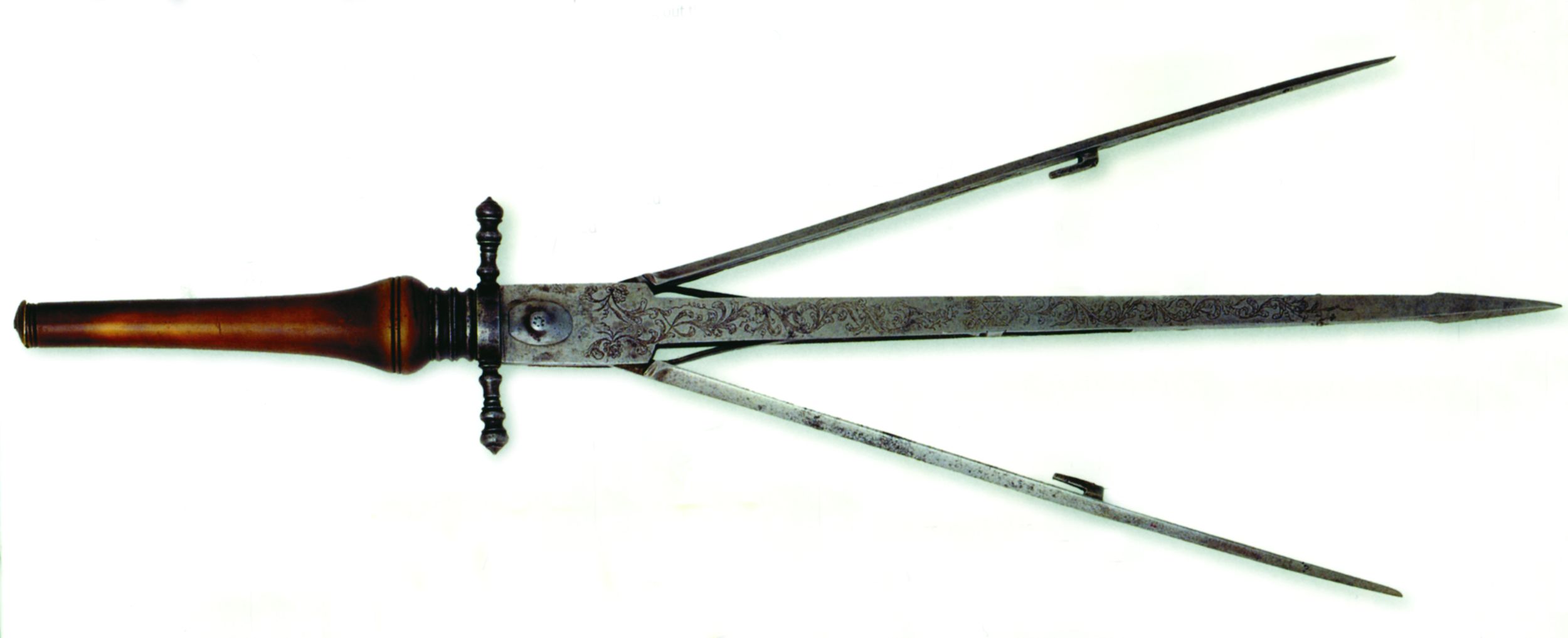
In general, all the dueling daggers found their way onto the battlefield, providing their special traits and a possible extra edge to an accomplished swordsman. The typical soldier’s dagger was a quillon dagger (standard with pikemen and musketeers) on the 16th- and 17th-century battlefield. These were carried on the side opposite from the sword or at the small of the back. After the mid-17th century, the use of a left-hand dagger in single combat fell out of fashion in much of northern Europe, while in southern Europe it continued. However, dueling was still very much in vogue. It continued to be a national pastime—if not a mania—in France, even though it was unlawful and punishable by death.
Spain and Italy carried on the design of left- hand daggers; both countries had a traditional fondness for knife and dagger. Cities such as Seville were famous for dueling with the dagger alone. The term main gauche, a French term meaning “left hand,” applied to any left-hand dagger that appeared at the end of the 16th century and described a shell or sail guard dagger. Its origins were Spanish, but it was made in several variations and popular in Italy as well through most of the 17th century. While the grip and pommel of the hilt remained the same, the dagger blade was usually 16 or more inches in length and had a sharply tapered form—sometimes an extremely narrow blade. In the usual form, an inch of the blade from the hilt formed a trap, two opposing holes or slots at either edge to catch and hold an opposing blade. The quillon was longer and straight, and the simple ring guard was replaced with a solid or intricately pierced triangular and thin steel guard covering most of the hilt and the back of the hand. The shape and the curve of the guard back toward the pommel reflected the sail description.
Here was a weapon designed to completely cover the left hand like the small target shield or gauntlet and be more effective in defending against sword strokes. These daggers continued to be used in Spain to the early 18th century. By then, the dagger essentially disappeared from the contemporary military weapon scene. The plug bayonet replaced both the dagger and the pike spear on the battlefield. The dagger would not return in large numbers until World War I, when it reappeared as an off-barrel long bayonet knife and trench knife. In World War II, various daggers were used, including formal Nazi regalia and commando knives.
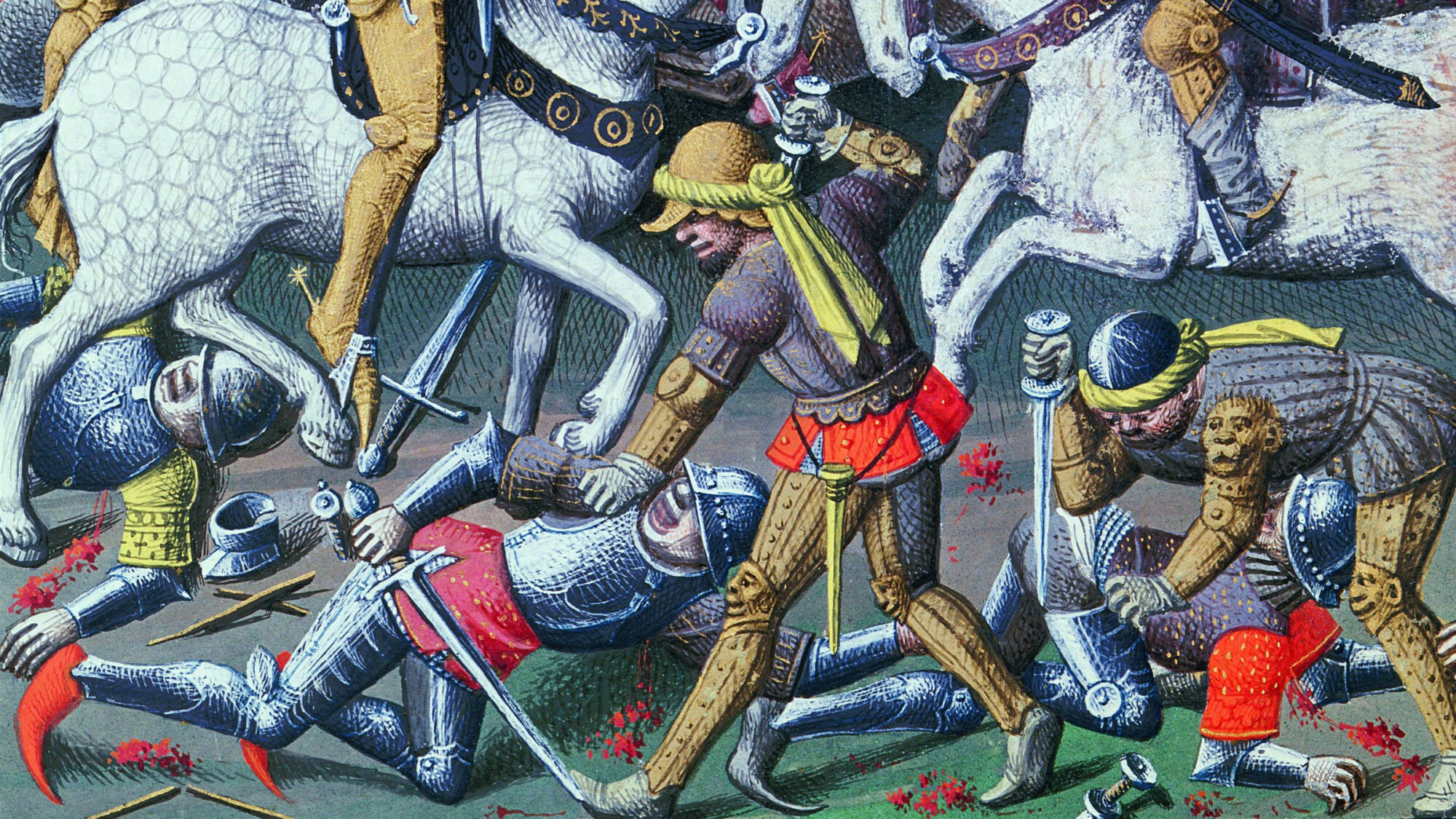
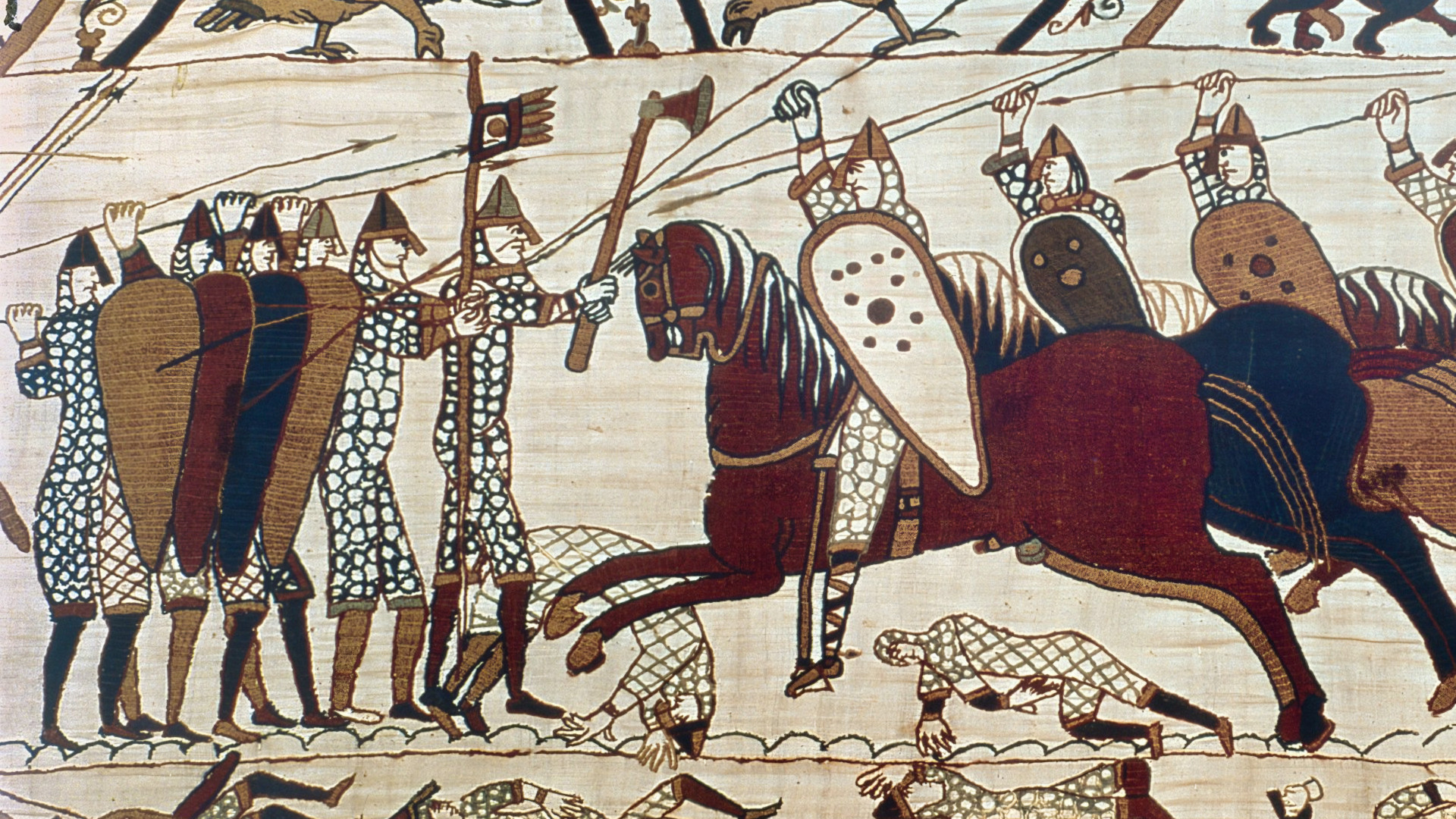

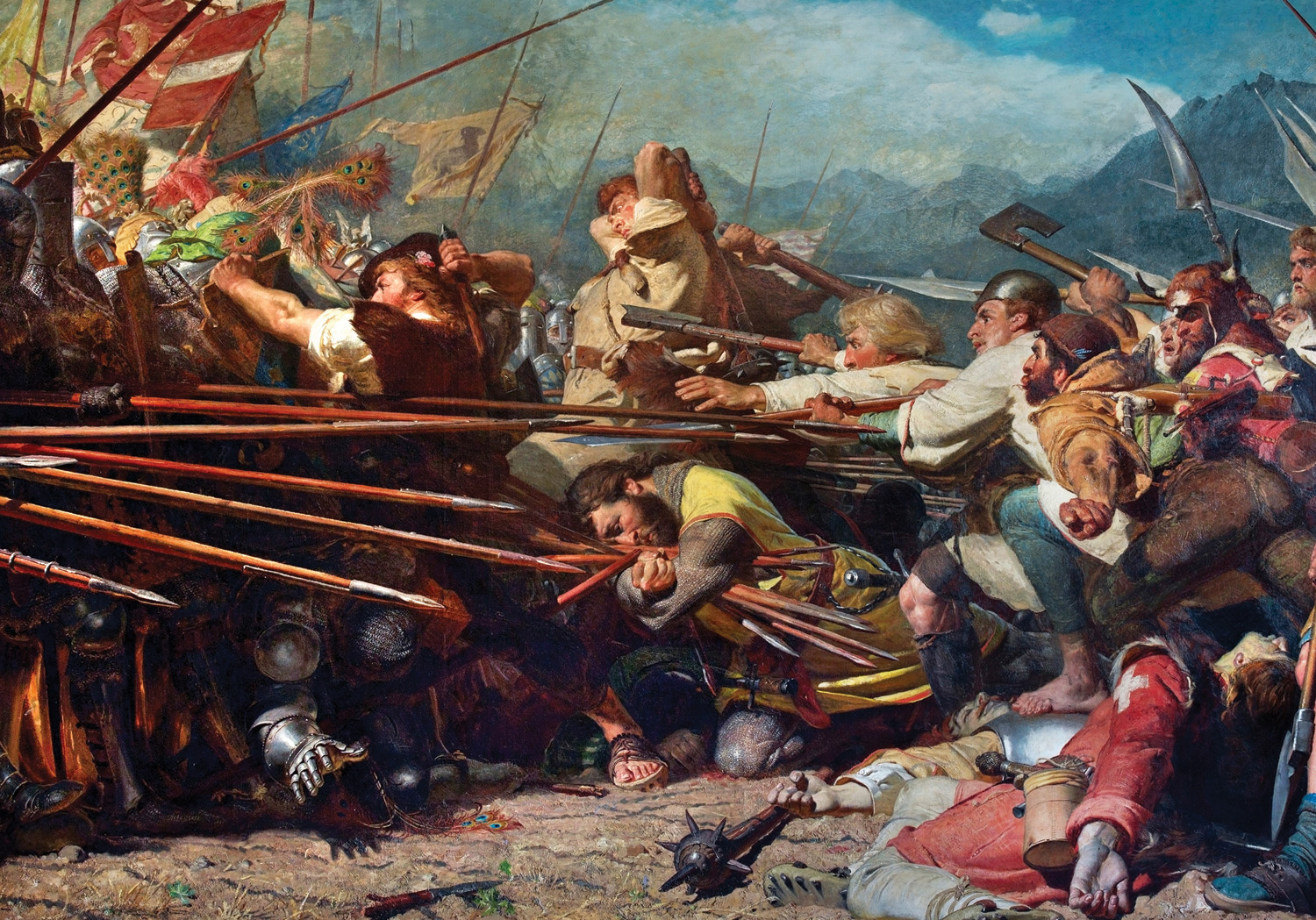
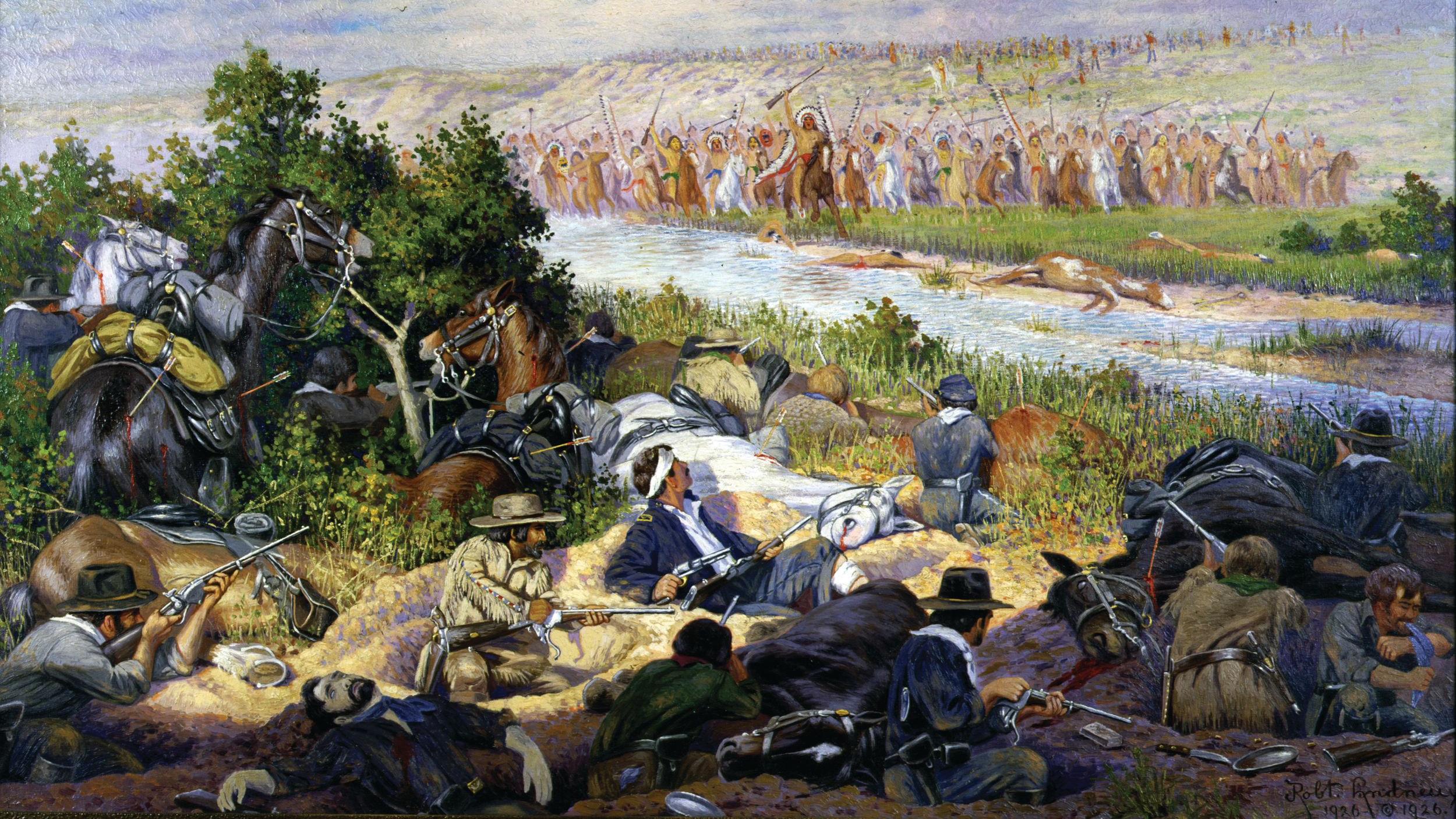

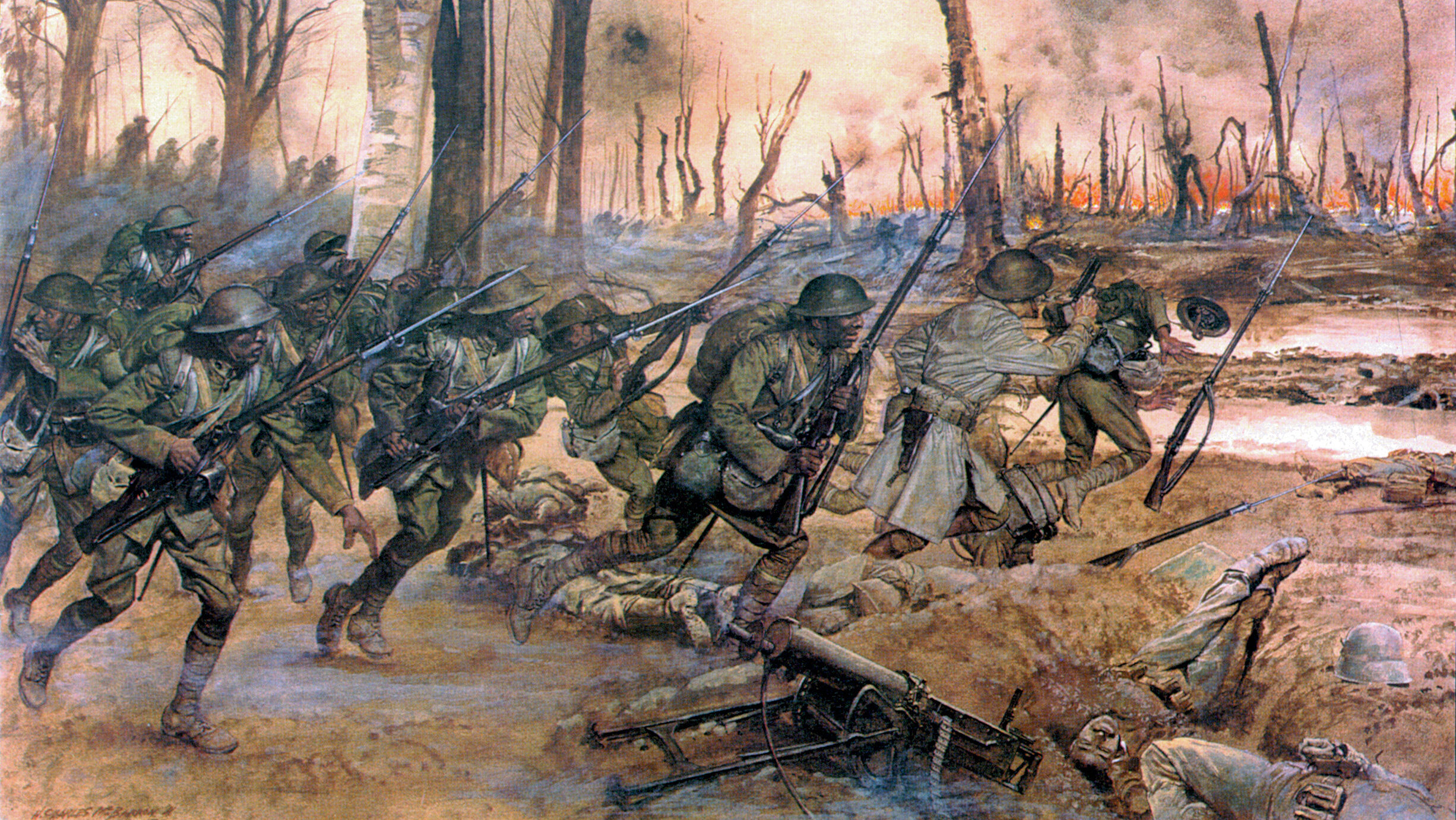


Join The Conversation
Comments
View All Comments